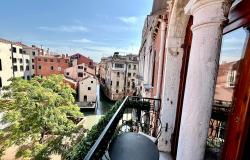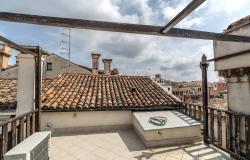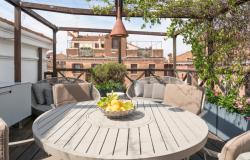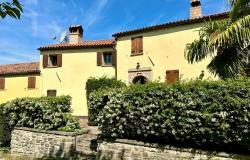Venture over the Ponte Romano to the eastern bank of Verona’s river Adige and you will find yourself in an oasis of peace and calm. Hidden behind the crumbling orange façade of Via Giardino is one of Italy’s most attractive Renaissance gardens and best-kept secret – Giardino Giusti. A garden of such tranquillity that in an instant you are taken from a dusty Italian street full of irate drivers honking their horns and transported into a world of Renaissance refinement. And you’ll know immediately what the English traveller Thomas Coryate meant when in 1611 he described this garden as a “second paradise”.
Agostino Giusti was a Knight of the Venetian Republic and Squire of the Grand Duke of Tuscany and the man responsible for the design of this lovely garden, which served as a backdrop for his palace. Laid out in 1570 with all the quintessential Italian charm of that period, with statuary and nature deliberately juxtaposed, it was lovingly restored in the 1930s and has most of its original features intact from fountains to mythological statues to a maze and an acoustic grotto. Not to mention an impressive collection of Roman remains.

In the western section of the parterre (formal garden with flower beds and gravel paths), are greenhouses brimming with lemon and orange trees that are built against the surviving 12th century city walls. The warm air is full of zest with uplifting citrus smells and I breathed in deeply as I followed in the footsteps of illustrious past visitors, among them Cosimo De’ Medici, Emperor Joseph II, Goethe and Mozart. Today though (because thankfully the gardens are not on Verona’s tour bus itinerary), there’s hardly ever anyone there and I had the entire gardens to myself.
The terraces are ordered so that they gradually uncover the views of the city. The lower area of tightly clipped and perfectly manicured box hedges contrasts with the upper area of natural wilderness, which would have been perfect for a game of hide and seek between a Renaissance lady and her lover. The terrace is hidden by woodland, home to cuckoos and warblers, and has the atmosphere of secret trysts and whispered promises. It is undoubtedly a place reserved for romance and the secluded benches hidden amongst the foliage are obvious invitations for this. According to local folk law, lovers who manage to find each other in the tiny maze are destined to stay together forever.
It’s a joy to wander up the old stone steps of the cypress avenue, with the 16th century ‘mascherone’, the immense grotesque stone mask with bulging eyes, gnashing teeth and flaring nostrils, looking down on you. From here you can climb up to the stalactite grotto, an artificial cave carved in to the hillside with an arched entrance flagged by columns and pediment, giving it the appearance of a temple. This was originally covered with an intricate design of shells, mosaic and mother of pearl but little remains today.

The final climb takes you to the belvedere (meaning beautiful view) where you are treated to one of the most stunning panoramic vistas of the city with the Lamberti Tower, the Basilica di Sant Anastasia and the Duomo all in sight.
Giardino Giusti is a place to unwind, reflect and linger away from all the hustle and bustle of life. A place you never hurry away from but always scurry back to.













